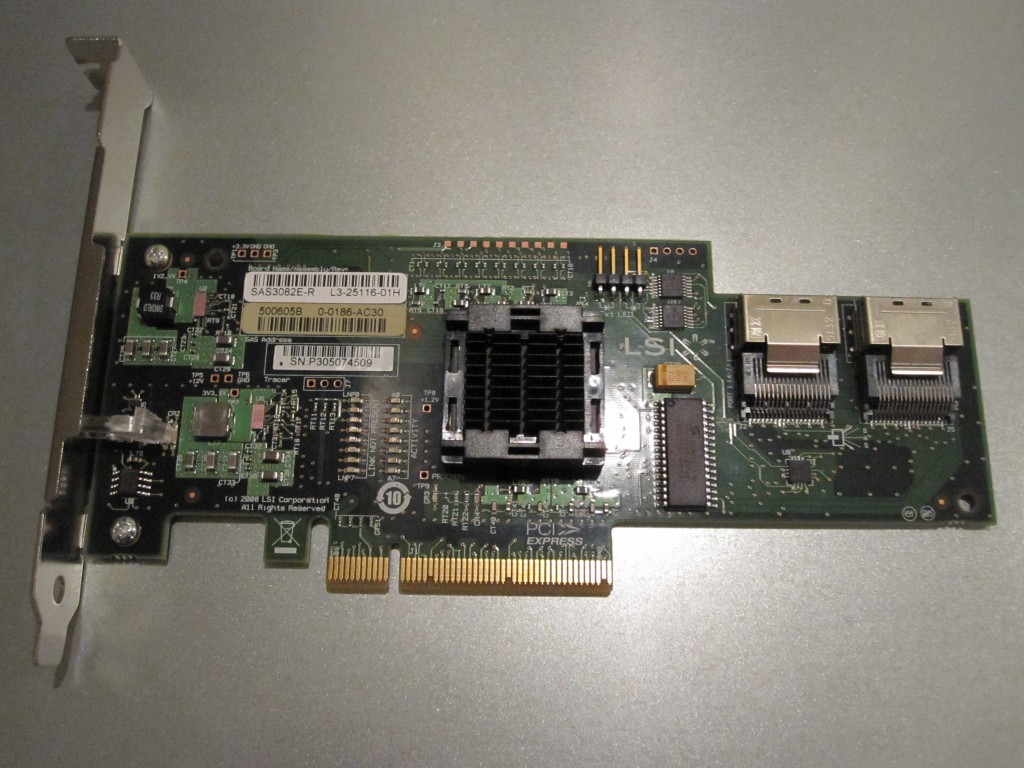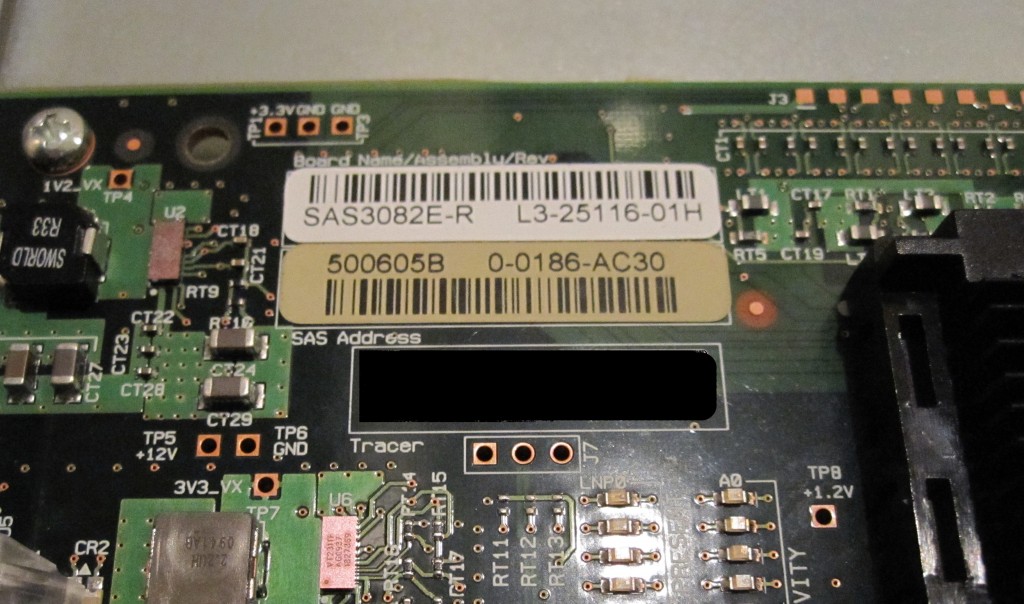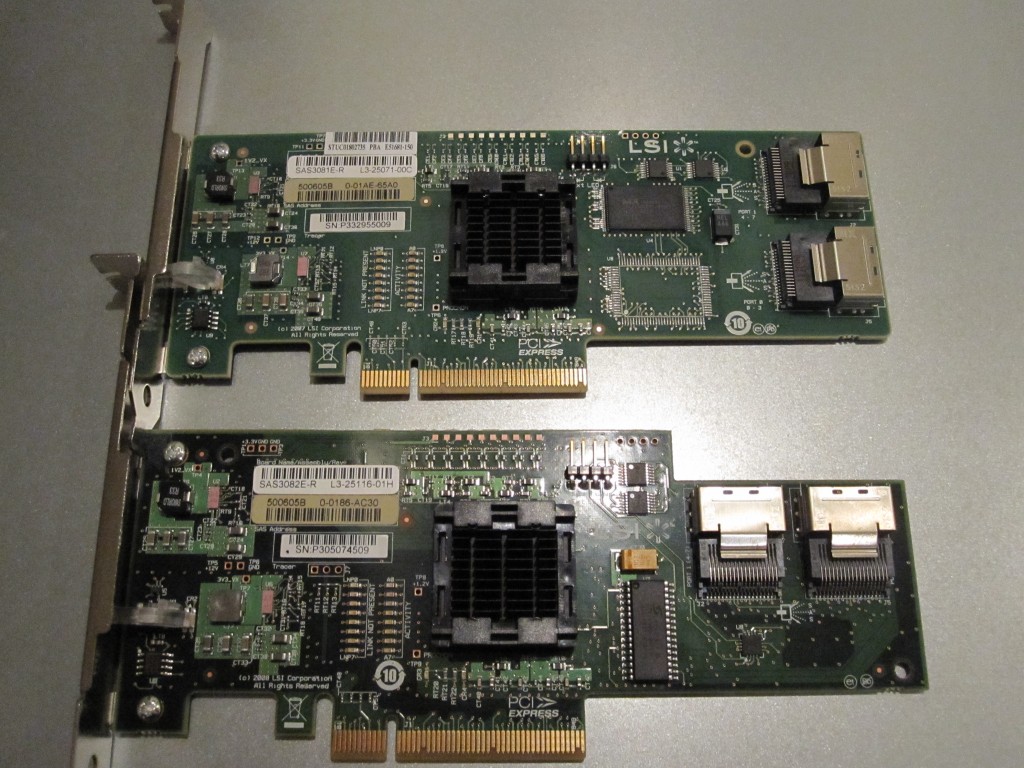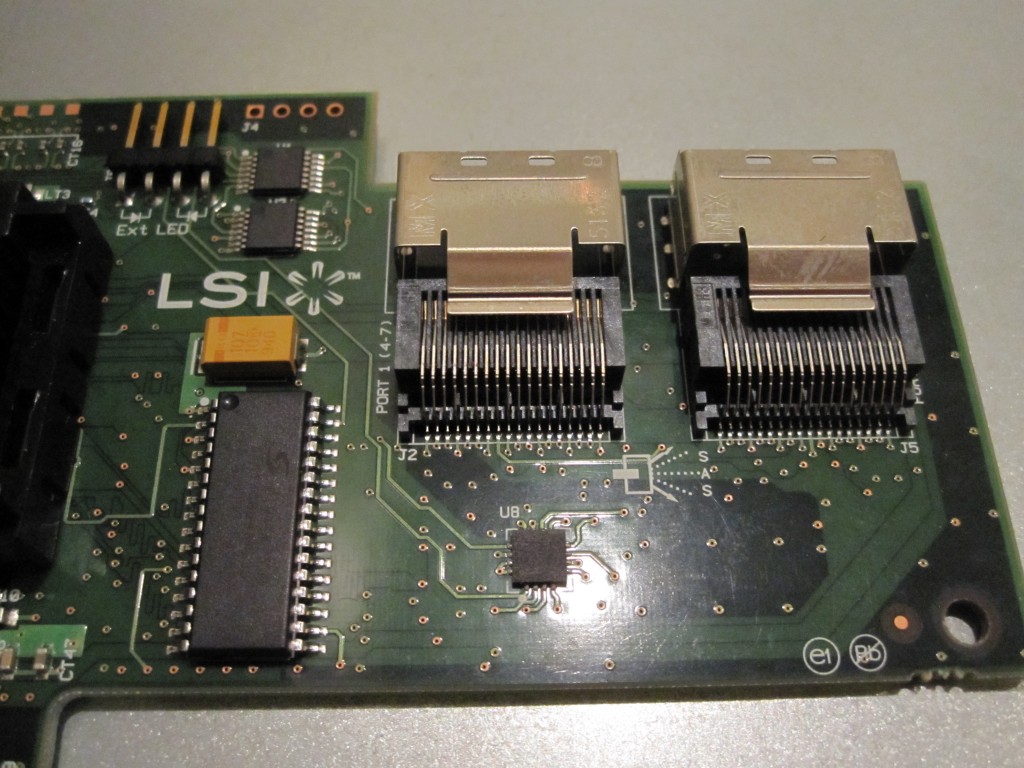A lot of users on this site, and of Windows Home Server, FreeNAS and OpenSolaris look for compatible RAID controllers that are both supported and inexpensive. For these users, both the older SAS 3.0 and SATA II LSI 1068e chipet and the newer LSI SAS 2008 are favorites. The LSI 1068e was an extremely popular RAID chipset that has the ability to be flashed to IT firmware to turn the controllers into (more or less) SAS Expander aware host bus adapters (HBAs). It is supported under most operating systems and was used by many OEM vendors.

Today I just wanted to highlight that there are other options to get the LSI 1068e based cards much less expensively than the LSI branded cards. One example I highlighted was the Intel SASUC8I which could be flashed with LSI IT and IR (RAID) firmware. One other great example is the IBM ServeRAID BR10i which was a commonly included card in many IBM systems.

Like the Intel SASUC8I, the IBM ServeRAID BR10i is a barely rebranded LSI card (it even includes the LSI part number sticker).

One major difference between the Intel SASUC8I and the IBM ServeRAID BR10i is that the dual SFF-8087 connectors have a different orientation on the two cards. The SASUC8I’s ports point directly out of the rear of the card to drive cages in the front of the chassis and parallel to the motherboard. The ServeRAID BR10i’s connectors point to the top rear of the card and perpendicular to the motherboard.

With all of that being said, the card is a PCIe 1.0 x8 LSI 1068e based card capable of only RAID 0, RAID 1, and RAID 1E. The real value here is twofold. First, one can create RAID 1 OS drives for ESXi and OpenSolaris which both do not work overly well with many onboard controllers. Second, system pulls (often for higher-performance RAID cards) make the ServeRAID BR10i a low cost option on Craigslist and eBay.
Conclusion
The IBM ServeRAID BR10i/ LSI SAS3082E-R is a solid card, much like the Intel SASUC8I. Due to system pulls, one can often find the card a bit cheaper than the Intel cards, making them an attractive low-cost option for an 8-port LSI 1068e SAS Expander enabled card. In fact, the system pulled cards are oftentimes less expensive than simple 8-port HBAs. On the flipside, I would always caution users to be wary of items claiming to be new system pulls as there are many unscrupulous folks that would resell non-functional parts.




I had a web site about this topic, but I got so much spam I had to shut it. You seem to have a better spam filter!
Hey Patrick,
Good find with these cards. Right after I read this, I looked them up on ebay just for fun, and got two for $50!
I just got the package and realized they don’t have the PCI bracket. D’oh! (Not the seller’s fault, they are clearly pictured without the bracket in the listing.)
Anyway, I don’t suppose you know where I could find brackets that fit these cards?
For other folks considering buying these cards, be careful to check whether or not they come with the PCI brackets before you buy!
Just bought 2 myself without brackets. Are brackets necessary for a homes server that’s never going to move?
If I understand correctly, the IBM Serveraid BR10i firmware doesn’t allow you to use this card as a JBOD device?
Which firmware from LSI should I use to flash this card to be able to use it as a regualer JBOD controller? (Haven’t been able to locate a LSI SAS3082E-R firmware on the LSI site)
Many thanks in advance..!
Peter: It is usually a good idea to use brackets.
AlphenIT: I think I used the SAS3081E-R firmware package for the IT firmware. See: Flashing Intel SASUC8I to LSI IT Firmware Guide
Hi Patrick,
You are right…! However I first flashed it with the latest firmware from IBM and browsing through the BIOS I saw that you can mix and match RAID and NON-raid drives.
The NON-RAID drives are passed through directly to the OS (no TLER issues that way). So installing the LSI IT firmware doesn’t seem necessary in order to get the disks passed-trough to the OS.
Don’t exactly know what other motivations there might be to flash it to the LSI firmware though
Generally one does IT just to ensure that the RAID controller does not do anything odd with the drives. That mode may be the same but it just eliminates variables which is why IT mode is popular.
Does anyone know if these controllers work well for pci passthrough you can use in esxi/xen with vt-d/iommu capable hardware ?
I recently tried with a dell perc 5/i and it was a disaster : as soon as iommu is enabled in bios the controller is quite unusable even without trying to passthrough it …
See the guide to configuring VMware VMdirectpath where a LSI SAS2008 controller was passed through.
Thank you for your answer !!
I have read the guide.
In fact it’s this guide that has decided me to try to take 3 servers (WHS, home automation , PBX) and put them in a “bigger” one using esxi/xen and passthrough for raid controller (WHS) or usb devices (home automation).
I was just wondering if the LSI 1068e based cards was as good as the LSI 2008 for passthrough, i will see as there is one that will be at home soon :)
Bad luck for the perc 5/i as it was quite a good card for the price.
I was hoping to passthrough the onboard sata chipset if it didn’t work with the perc, but i can’t even install/boot/use correctly a non virtualized OS on the 5/i if iommu is enabled.
For anyone who is still looking for these cards, we are now offering them for $52. We are also offering a $5 option to add a full-height PCI bracket.
Check out the product here:
http://www.glcomp.com/ibm-system-x-serveraid-br10i-sas-sata-controller
is there any software that can be installed on windows server 2008 r2 to monitor the status of the raid array?
Hello, will be this card working with HP Smart Array SAS Expander Card?
You should note that this card do not support LBA > 2TB as far as I know.